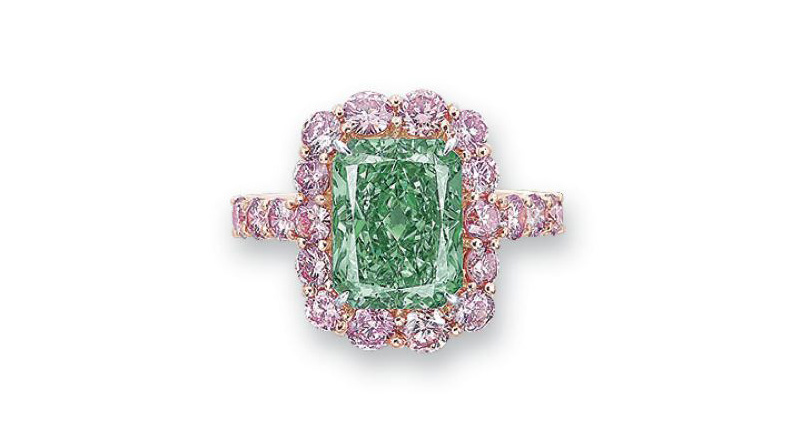
Green Diamonds
06.12.17
Green diamonds are intriguing and are possibly one of the most rare colours of them all. The green colour is as a result of exposure to radiation, this can have occurred naturally or in a laboratory.
The natural radiation process happens in the earth’s crust by exposure to radioactive uranium in rocks. The geological conditions which yield this colour are rare, meaning they’re found in few places predominantly Africa, South America and Russia. There are a few sources of natural radioactivity, they been noted as Granites, which have a high concentration of radioactive elements (such as the accessory mineral Zircon) and Kimberlites, with crustal xenoliths entrained in their matrix which cause green surface spots (found in the Guaniamo area in Venezuela). It’s been suggested that groundwater could be another potential source due to radioactive elements being leached out of crustal rocks and being dissolved in the water. This type of radiation is most likely the source of homogenous green surface skin as the groundwater can easily cover the surface of the diamond, this has been observed in the Finsch Mine in South Africa. Surface spots are much more common on diamonds from placer deposits than diamonds from kimberlites due to the high concentration of radioactive elements which get concentrated in them.
The intensity of the colour shown in green diamonds varies depending on how long the diamond has been exposed to the radiation and how strong that source is. Natural radiation sources are very weak and therefore, to show any signs of irradiation the diamond will have to be exposed for a very long period of time. One of the oldest known placer deposits yielding diamonds with green surface spots caused by radiation is more than 2.5 billion years old.
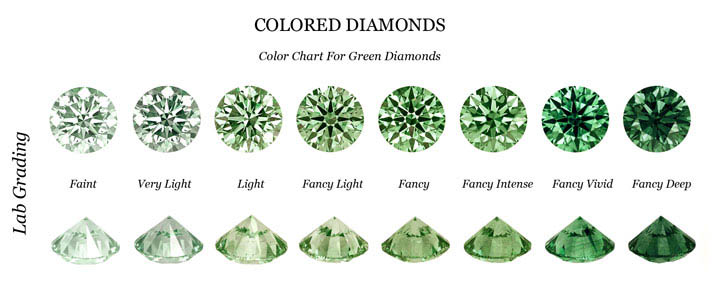
Colour Chart courtesy of coloreddiamonds.
In a lab, irradiation is achieved by using a linear accelerator, called a linac, gamma rays or a nuclear reactor. Older methods of treating green diamonds include exposure to radioactive salts. Once faceted, the diamond is immersed in radium salts for a long period of time. This can cause residual radioactivity which sometimes does not decay. A diamond donated to the British Museum in 1914 by Mr William Crookes (first person to discover radiation’s effects on diamonds), remains there today and has lost no radioactivity or colour. This process causes a “mottled” effect (under a microscope) on the surface of the stone making it easily identifiable.
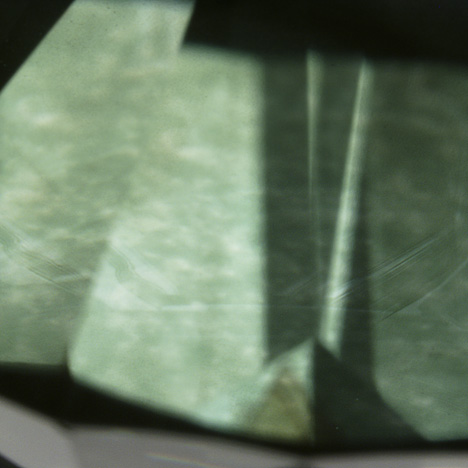
Observed at 35× magnification, the diamond shows a mottled effect created by shallow green radiation stains. Photo by Jian Xin (Jae) Liao.
Today diamonds are safely irradiated by proton and deuteron bombardment, gamma ray bombardment, neutron bombardment and electron bombardment. These high-energy particles alter the diamond’s crystal lattice by knocking the carbon atoms out of place. This process can cause a range of colours and therefore the stones are then usually annealed to further modify the colour.
One of the most famous green diamonds is the Dresden Green, named after the capital of Saxony where it has been exhibited for almost two centuries. It’s 40.70ct, has 58 facets and was graded VS1 by GIA in 1988. The green colouration is uniform throughout the stone making it extremely rare, it is also chemically pure meaning it contains no traces of boron, hydrogen or nitrogen. The Dresden has been cut into an irregular pear shape, it’s said if cut slightly differently it could be internally flawless. The diamond was first mentioned in 1722 when a London newspaper carried out an article about it.
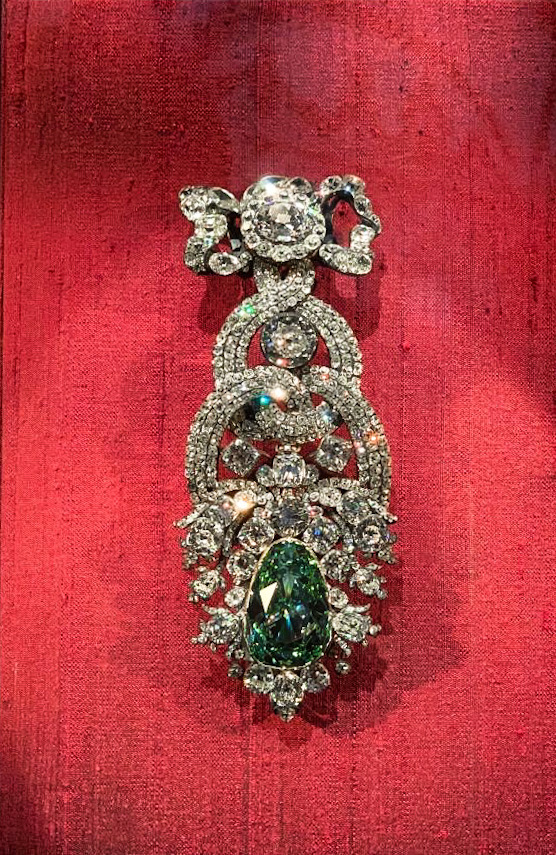
The "Aurora Green" is the largest Fancy Vivid green diamond ever sold at auction. The ultra rare 5.03ct stone had no fluorescence and had a clarity of VS2. The stone went under the hammer on May 31, 2016 at Christie's auction house in Hong Kong, selling for $16,818,983, more than $3.3 million per carat!
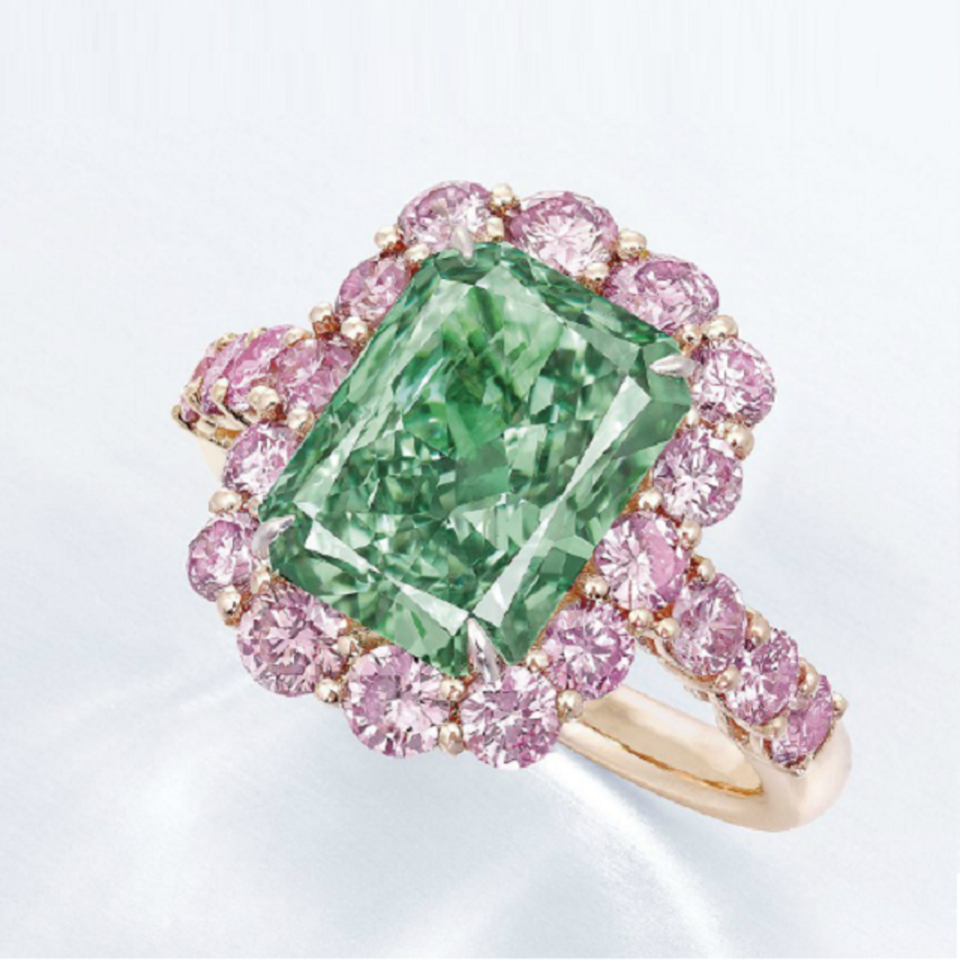
The Aurora Green set in a halo of pink diamonds. Photo courtesy of Forbes.
Green diamonds are not in the top 3 of the most rare diamonds this however, could be due to lack of demand for them compared to pink, blue, red and yellow.
In our lab we see a small share of green diamonds and every time we do it’s always just a little bit special.




